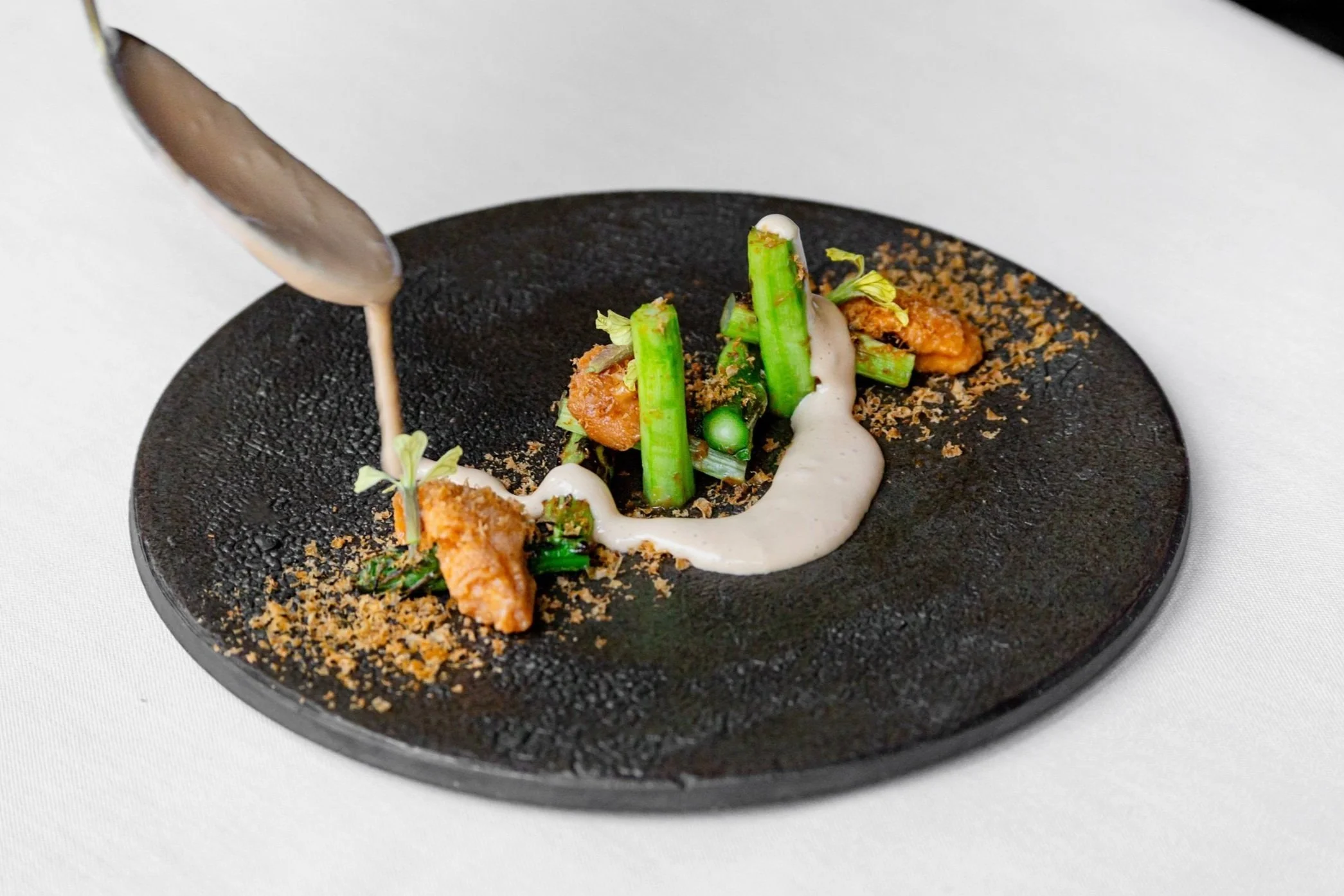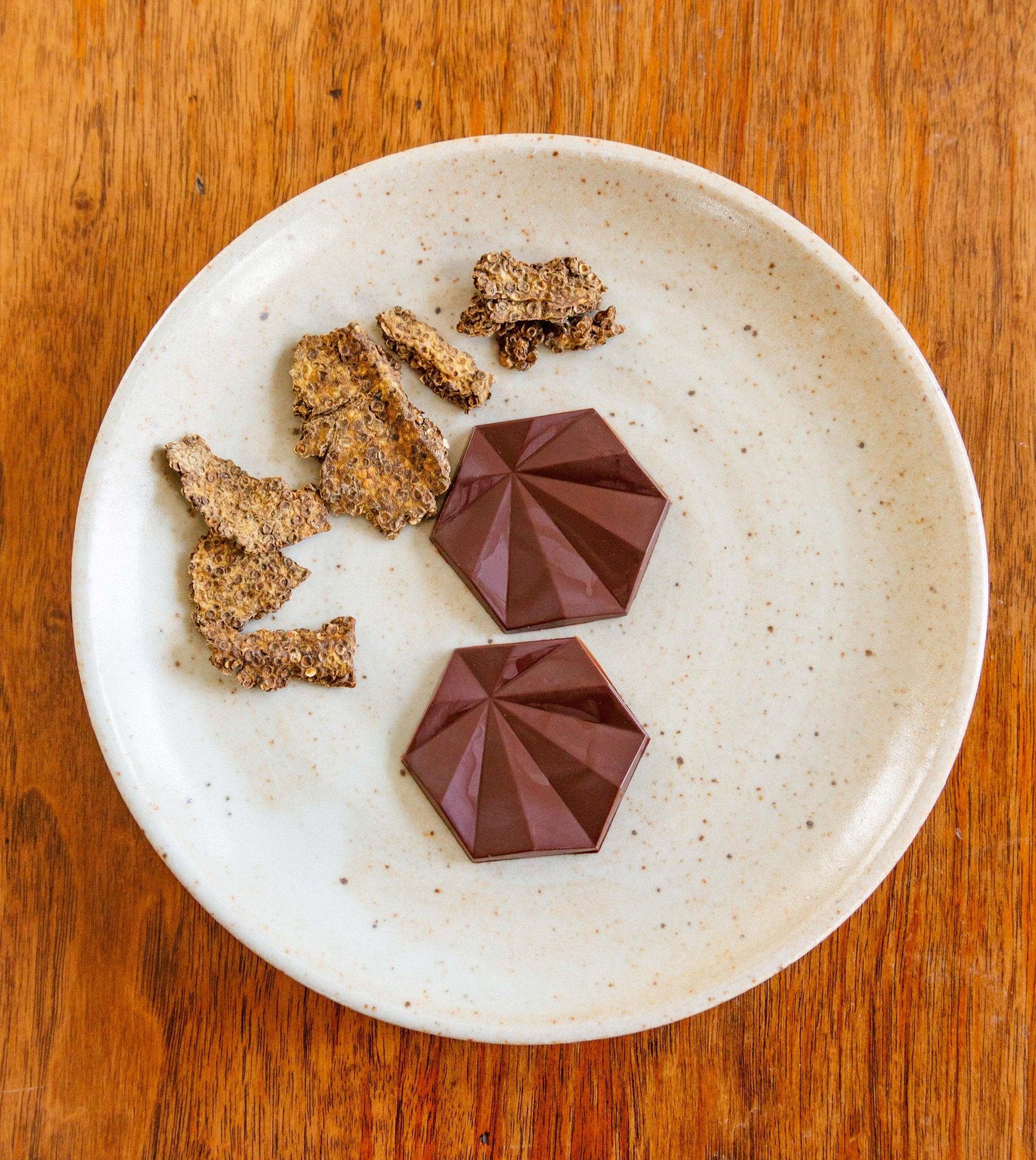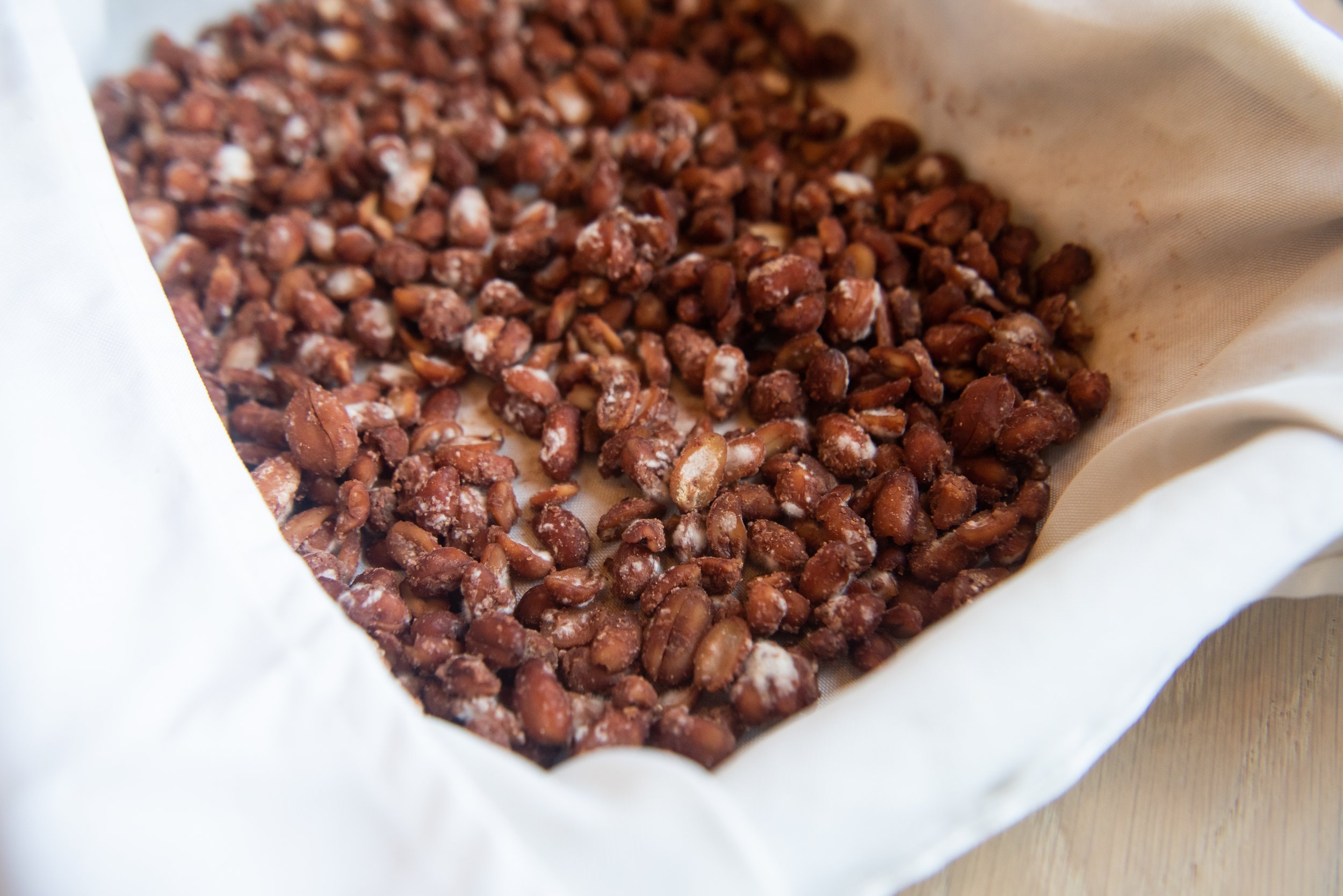Fermentation and Upcycling: Building a Community of Makers
An in-depth spotlight on the artisan-led zero waste movement in the Bay Area
Artisan food makers in and around the Bayview neighborhood of San Francisco are not only connected by physical proximity; they are also a part of a community sharing upcycled ingredients to support each other and the environment.
“Upcycling” means rescuing byproducts from farming and traditional food and drink manufacturing processes for use in other food production. Spent grains from a brewery can be turned into flour and bread, for example, while scraps from a butchery can be turned into jerky. This practice helps cut down on the whopping $218 billion worth of food waste (an estimated loss of 30% to 40% of total food production) in this country alone—waste that creates quite the carbon footprint.
In this pocket of San Francisco, two key players in the upcycling movement are Eleana Hsu and Kevin Gondo of Shared Cultures, who first fell into the fermentation world through their love of foraging and mushrooms. “We discovered that koji is not only a fungi, but a way to preserve food,” says Hsu. Shared Cultures’ main focus is fermenting koji in order to explore new flavors and preserve the bounty of Northern California. The duo sources rice from Koda Farms (the oldest rice farm in California) to cultivate koji used for their misos.
Sticky Toffee Pudding, Shared Cultures Peach Miso, De La Creamery Crème Fraîche Ice Cream, Plum FROM CHEF SPENCER HORVITZ OF SLUF
Grilled Asparagus, Shared Cultures Shio Koji, Fresh Hokkaido Uni, Uni-Miso Sauce, Uni Bottarga FROM CHEF DAVID YOSHIMURA OF NISEI
Using koji for fermentation is nothing new; Hsu (a first generation Chinese-American) and Gondo (a third generation Japanese-American) say their respective Asian cultures have been using this technique for thousands of years, hence the name of their company.
To make their misos, Hsu and Gondo combine cooked beans with their koji rice and local San Francisco sea salt. They then add in other ingredients, like roasted seasonal vegetables, and ferment the mixture for two to eight months. Some of their miso flavors have included corn, sun-dried tomatoes, kombu, urfa, ancho chiles, and honeynut squash. Chef Spencer Horovitz, formerly of Oakland’s Slug, infuses his sticky toffee with Shared Cultures’ peach miso.
Gondo says,“[we’re] fortunate to have been able to grow relationships with various restaurant partners,” like Chef David Yoshimura of Nisei who has used Shared Cultures’ shio koji for a grilled asparagus dish, among others. “When chefs use our miso and koji not in the traditional sense—like in pasta dishes or on an Italian menu—it’s a genuine compliment to our product and backgrounds,” Gondo says.
J Street Chocolate
Char Siu BBQ Pork Jerky: Pork Top Round, Hoisin, Shared Cultures Koji Soy Sauce, Pineapple Juice, Honey, Scallion, Ginger, Rice Vinegar, Five Spice
At J Street Chocolate, Julia Street started making her single origin, bean-to-bar chocolate as a hobby about five years ago, and recently began experimenting with fermented and upcycled ingredients. “Fermentation is my passion,” says Street, “chocolate is a fermented food, after all.” For her chocolate miso bar, she incorporates her own cacao nib miso, and uses Shared Cultures’ leftover shoyu lees for her Shoyu Moromi bar.
Street also uses leftover tomato skins and seeds from making tomato sauce for a savory-sweet white chocolate bar. She collects day-old sourdough bread from a neighborhood bakery for her Sourdough Crunch bar; and she sources spent grain from a nearby brewery for her Piv Snacks bar, featuring organic Triscuit-style crackers. “Rather than let things go to waste or even the compost bin, I’m trying to show how you can integrate ‘waste’ in other foods to make them fun and delicious,” says Street.
Anica Wu of Bonjerk follows a similar philosophy, working with meat and trim from local, sustainable ranches and distributors to make her jerky products. In a divergence from the ubiquitous teriyaki jerky flavor, Wu instead infuses various meats with flavors from her childhood in Hong Kong, like char siu BBQ pork, black garlic beef, and málà Sichuan pork.
The inspiration for Bonjerk (which Wu launched last year), came from an obsession with a jerky she once tried from a small town in central California. She attempted to make her own jerky at home, eventually taking things a step further by working at a local butcher to see for herself how to make the best jerky using all parts of the animal.
“If I was going to be serious about making jerky, I had to understand the meat industry,” says Wu. She sources her meat exclusively from ranchers while prioritizing female-run ranches that work to restore the health of their soil. To make the jerky, Wu does her own trimming and turns leftover lard into pork floss. The meat is then marinated in her signature flavors for a few days before going into the dehydrator and getting sliced into squares. “The whole process takes about four days,” says Wu, who sells the products on her website and at pop-ups around the city.
Stems, Leaves & Buds: Fried Cauliflower, Braised Cauliflower Leaves, Pickled Cauliflower Stems, Cauliflower Greens Labneh, Harissa, Currants
Spicy ‘N’ Sticky Fish Head: Roasted Salmon Head, Coconut Water Reduction, Fish Sauce, Tempura Crispies, Thai Chile, Green Onion, Cilantro, Mint, Lime
In 2022, David Murphy and Kayla Abe launched their pizza restaurant Shuggie's Trash Pie + Natural Wine after a successful run of their Ugly Pickle Co. (which they decided to close this year). Pickles still pop up on the menu at Shuggie’s, which exclusively features manufacturing and farming byproducts like off-cuts of meat and “ugly” produce. “We’re incorporating all these things that would otherwise get looked over in our modern industrial food system,” Abe says. “We’re trying to educate folks about the effect of food waste on the environment and climate change by sequestering waste from manufacturing. But as a restaurant, we’re in a unique position to be able to cycle through ingredients at a much faster pace,” says Murphy.
The duo first learned about the extent of food waste while sourcing produce for Ugly Pickle Co. Now, they’re able to rescue ingredients like whey from the cheesemaking process, and oats from the oat milk-making process to make the dough for their playfully-named pies. Some of the toppings are upcycled too, from the “ugly” mushrooms on The Shroom with a View pizza, and the salt cod made from fish scraps on the Dead Combo. More scraps and “trash” are used in the shareable dishes, like leftover fish cheeks, collars, and heads for the Spicy N’ Sticky Fish Head with housemade sticky sauce, tempura crispies, and green onion trim.
Murphy encourages other chefs interested in using upcycled products to ask their butchers, farmers, and fisheries for things that might go to waste, like green tomatoes that have fallen during harvest or fish trim that might otherwise go to dog food and cosmetic makers. “Some of these foods might need a little caressing to make them tasty, but at the end of the day if we as chefs started cooking and sourcing like this, we would have an impact on the environment and the climate,” he says.








